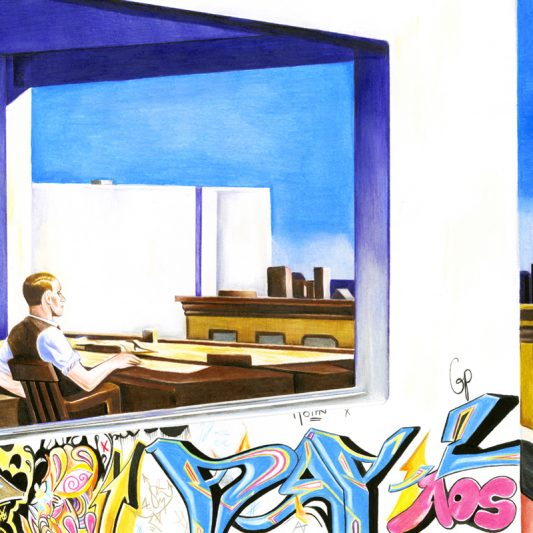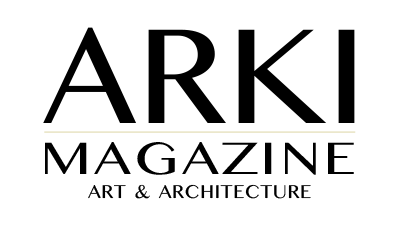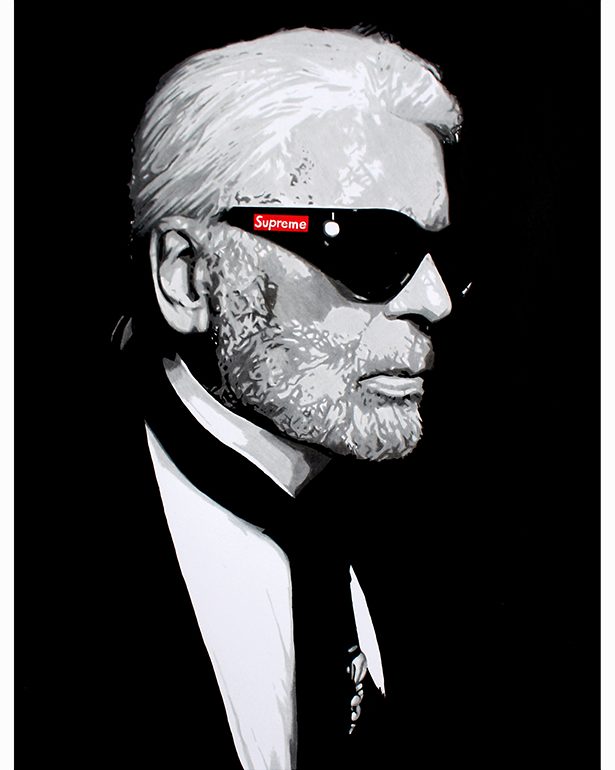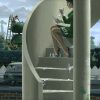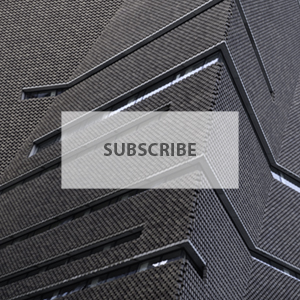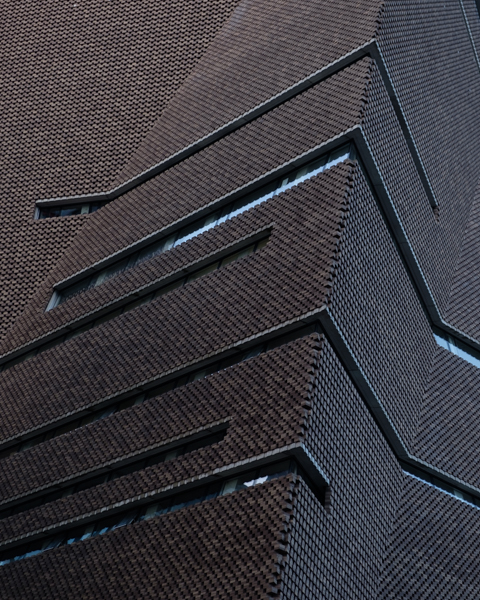In conversation…
“lately, I’ve been delving into more profound and sometimes sobering subjects like current global events“
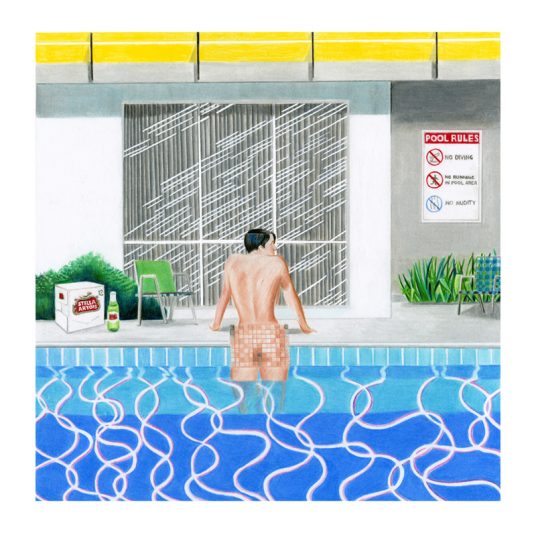
To start with, we won’t have an issue with pronouns. Where does the name come from and why the anonymity?
The decision to keep my identity a secret as Day-z stems from a combination of personal, artistic, and societal factors.
In a world where personal information is increasingly accessible and privacy is often compromised anonymity allows me to truly focus on my art without the influence of ego or external pressures. When my identity is not attached to my work, I can explore my creativity more freely, experiment with different styles, and convey my messages without any preconceived notions or expectations based on who I am as an individual. It grants me the freedom to communicate and connect with a wider audience. People from all walks of life can relate to and interpret my art without being influenced by my background or personality. Moreover, I’m drawn to the element of mystery and intrigue that comes with being anonymous. It adds an extra layer of curiosity and excitement to my work. By focusing on the art itself rather than the artist, the audience is encouraged to explore their own emotions and thoughts
The name Day-z came about when my brother was tackling the Herculean task of pronouncing my real name. Let’s just say, he took creative liberties that would make Shakespeare proud. Somewhere in the midst of linguistic acrobatics, ‘Day-z’ emerged. Now, in the grand tradition of nicknames, ‘Day-z’ became the rockstar alias I never knew I needed. So, here’s to my brother – the unsung hero behind the name, with a sprinkle of mispronunciation magic and a dash of sibling ingenuity, ‘Day-z’ came to life. A name that’s both a hilarious memory and a badge of honor.
Your work often concentrates on re-envisaging popular paintings or elements of pop culture. Lately, there seems to be a bias toward current global events which can be quite harrowing, like your work, ’ there’s no place like home’ These things clearly affect you. Can you elaborate more on this?
My artistic journey has always been about taking familiar images and giving them a twist – it’s like remixing the classics with a modern beat. And lately, I’ve been delving into more profound and sometimes sobering subjects like current global events.
“There’s no place like home” is a prime example. It’s a riff on the iconic phrase from ‘The Wizard of Oz,’ but with a poignant twist. It’s not just a nod to pop culture, but a reflection of the profound sense of displacement and yearning for stability that many people are experiencing in these uncertain times. The art becomes a conversation starter, a visual dialogue about the human experience.
As an artist, I’ve found solace in translating these emotions into visual narratives. It’s like turning my canvas into a mirror that reflects back the complexities of our world.
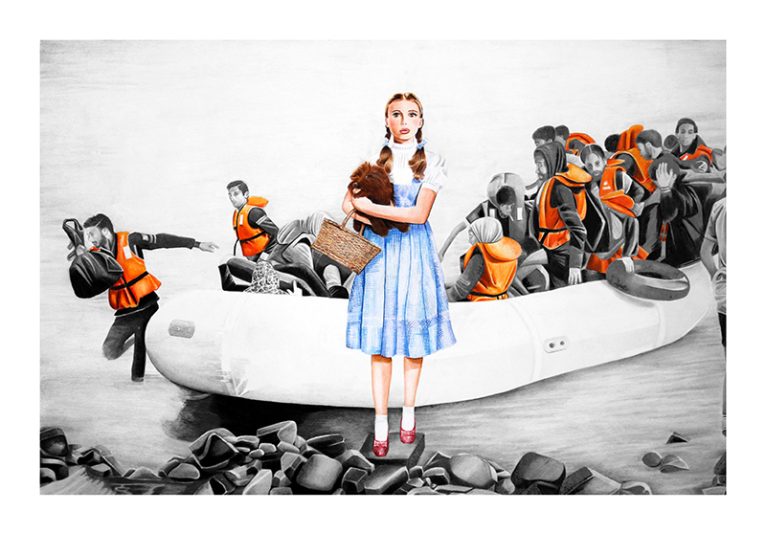
In a world where we’re inundated with information and news, art has the power to distill these overwhelming emotions into something more tangible, and more relatable. It’s not about dwelling solely on the darkness, but about shining a light on it, examining it, and perhaps finding a bit of hope or connection in the midst of it all.
My art becomes a way to channel those feelings into a creative outlet. It’s like a visual diary that captures the zeitgeist, inviting viewers to pause, reflect, and engage in a conversation that goes beyond words.
I’ve always loved how you take popular works and labels and almost bring the reality of them to the forefront, inviting the viewer to think a little more. (Why IS Supreme wrapped in plastic…?) Can you elaborate on your perspective of societal depiction of popular imagery?
I’ve always found the societal depiction of popular imagery to be a fascinating terrain to explore through my art. It’s like holding up a mirror to the world and asking some thought-provoking questions. We’re bombarded with popular imagery every day, and it often becomes so ingrained in our culture that we stop questioning it. My art aims to deconstruct the familiar, encouraging viewers to see beyond the surface and think deeper about the messages embedded in these symbols. Take, for instance, the idea of wrapping something as iconic as a Supreme logo in plastic. It’s a playful way of challenging the consumerism and hype that often surround such brands. By placing it in an unexpected context, I invite viewers to reconsider the value and significance we attach to these symbols. There’s often a sense of irony in my work, where I juxtapose the ordinary with the extraordinary. It’s a reminder that sometimes the most mundane aspects of our lives can carry profound meaning if we take a moment to look at them differently. In essence, my art is like a visual playground for exploring the societal significance of popular imagery. It invites viewers to question the status quo and engage in a more profound conversation about the world we live in.
Are you quite an emotional person?
I have my moments.
As much as art is borderless, I know you split your life between London and Cyprus, do you find the location significantly dictates your style of work? Is London more ‘supreme plastic’ and Cyprus more ‘There’s no place like home’ for example?
You’ve got a keen eye for the nuances of my work! Location does indeed play a role in shaping my artistic perspective, much like the different chapters in a book, London – The Playground of Contrast: London, with its bustling urban landscape and diverse culture, often inspires the more thought-provoking, satirical, and concept-driven pieces like “Parking Ticket” It’s a city where contrasting elements collide, and that juxtaposition often finds its way onto my canvases. Cyprus – The Serenity of Reflection: On the other hand, Cyprus, with its tranquil landscapes and serene Mediterranean setting, does inspire pieces that touch on themes of home, belonging, and introspection, akin to “There’s No Place Like Home.” The natural beauty and quieter pace of life here encourage a different kind of reflection in my art. So, you could say London injects a certain urban energy and a flair for social commentary into my work, while Cyprus lends a sense of serenity and a connection to the essence of home. It’s a beautiful duality that keeps my art dynamic and ever-evolving, much like the places themselves. I think the drawing ‘Live Young’ is a good example of how the two places pay homage to my work
… I’ve always thought there to be a fine line between creating artwork that resonates and having something more ‘generic’ and beautiful on your wall. Being aware of the state of the world is one thing, having a constant reminder hanging on your wall can be an interesting discussion. Some will see it as ‘i don’t need a constant reminder’ others will see it as ‘effectively capturing a moment in time’….
Do you think art can create actual change?
Absolutely, art has the remarkable power to create change. It can be a catalyst for social, cultural, and even political transformation. Art has an unparalleled ability to evoke powerful emotions. It can make people feel deeply, empathize with others’ experiences, and motivate them to take action. When people are emotionally moved by art, it can drive them to make a difference. Art often challenges existing norms and conventions, it can question the way things are and inspire individuals and societies to think differently, prompting change.
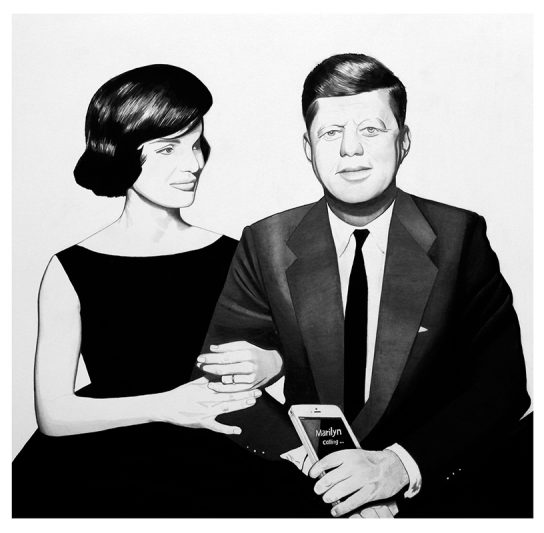
7. Have you seen changes in yourself as your art evolves?
Definitely, I have seen more style changes than a fashion model during Fashion Week! The journey of my art has been a bit like my own life story unfolding on a canvas, If my early art could talk, it would say, “Hey, remember when you couldn’t even draw a straight line?” Over time, my style has matured I’ve moved from simple beginnings to more complex and intricate forms of expression. Back in the day, I’d draw inspiration from everywhere, now my creativity guides me towards deeper themes and more profound messages. I’ve gone from doodling on scraps of paper to covering entire walls. My art has taught me that it’s okay to dream big.
8. When you’re not creating, what keeps the anonymous Day-Z busy?
When I’m not lost in the world of art I like to explore. I enjoy wandering the city streets, discovering hidden corners, and finding inspiration in the most unexpected places and sometimes even where to place my next piece. Occasionally, I team up with fellow artists for collaborative projects. It’s a chance to combine our creative forces and bring something unique and exciting to the world. I also have a passion for swimming – it’s where I do my best underwater brainstorming, diving into the depths of creativity while doing laps.
9. If you could have any 3 artworks hanging on your wall, what would they be?
Great question! It would probably have to be
1. The Storm On The Sea Of Galilee by Rembrandt
2. Expectations by Lawrence Alma-Tadema
3. An original Mickey Mouse drawing by Walt Disney
